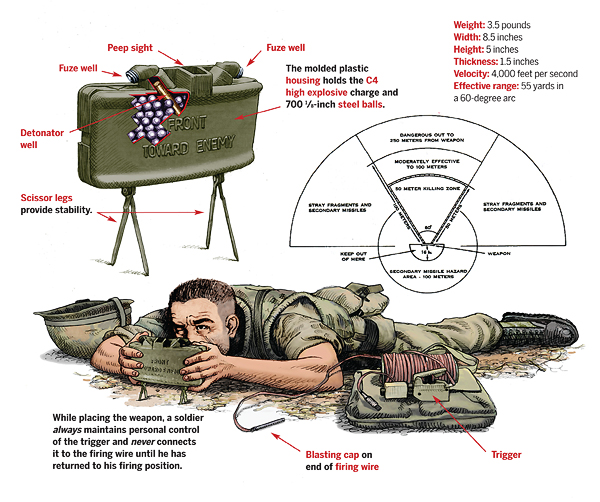
In the lead-up to World War II József Misznay, a Hungarian army officer and ballistics expert, and German physicist Hubert Schardin formulated the Misznay-Schardin effect, a phenomenon in which the blast from the face of an explosive sheet expands perpendicularly from its surface. Nazi Chancellor Adolf Hitler was particularly interested when fellow Austrian Franz Rudolf Thomanek applied this principle to design shaped charges to defeat tanks and fortifications.
The war ended before Thomanek could perfect his weapon, and information on the Misznay-Schardin effect fell into American hands. Explosives researcher Norman A. MacLeod used it to design a weapon to counter human-wave assaults, such as those waged by Chinese soldiers against Americans in the Korean War. He named his antipersonnel mine the claymore, after the two-handed sword wielded by his Scottish ancestors. The device weighed 5 pounds and shot 700 steel cubes 40 feet.
The U.S. Army wanted something lighter, more efficient and more powerful. Responding to its 1954 request for proposal, researchers at Aerojet Corp. collaborated on a weapon whose C-4 charge could shoot steel balls to an effective range of 55 yards. The Army accepted the claymore in 1956, and factories produced 80,000 per month during the Vietnam War. U.S. soldiers first used them to devastating effect against Viet Cong and North Vietnamese human-wave assaults.




